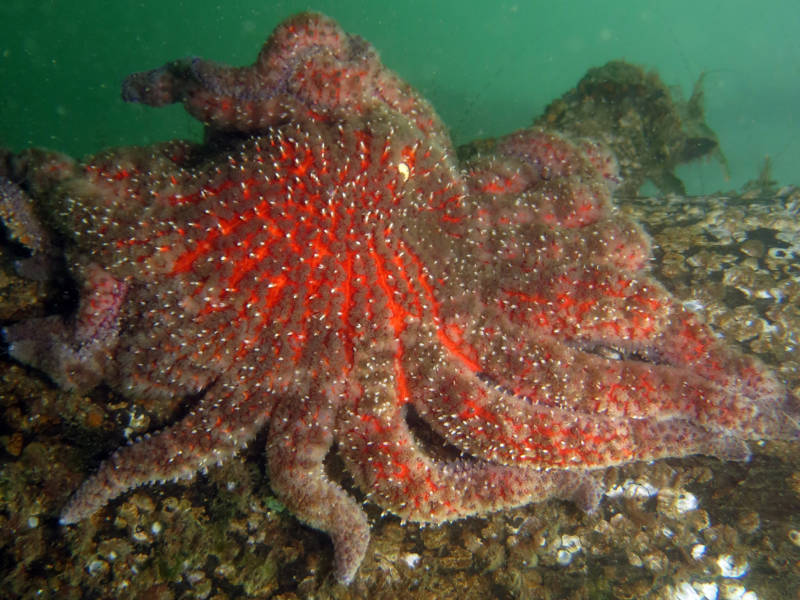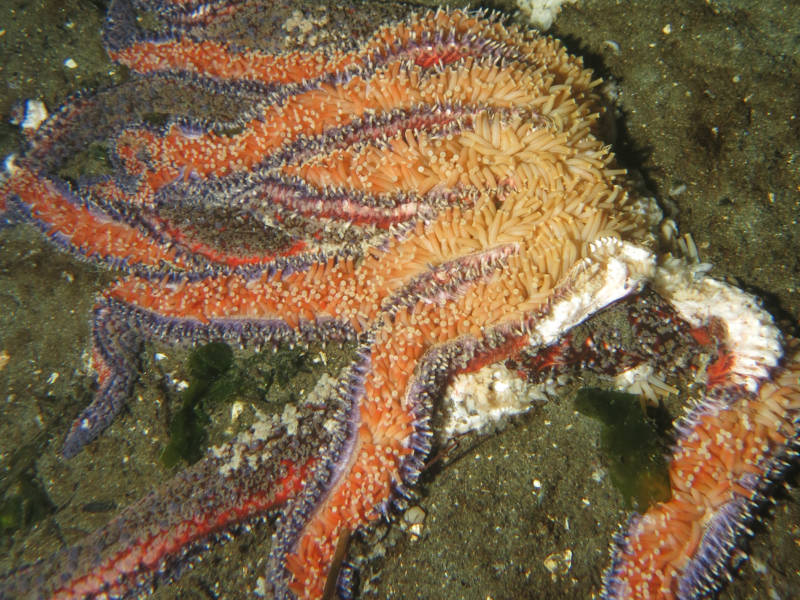The skin lesions are the first sign that something is wrong. Then limbs fall off and the body disintegrates, collapsing in on itself as it liquefies. In the end, what was once a sea star is only a puddle on the ocean floor.
Since 2013, sea star wasting disease has killed so many starfish along the Pacific Coast that scientists say it’s the largest disease epidemic ever observed in wild marine animals. Where there used to be dozens of stars, scuba divers now report seeing none.
And while the epidemic itself is a naturally occurring (if particularly devastating) phenomenon, newly published research suggests that climate change may have exacerbated the disease’s deadliness.
“What we think is that the warm water anomalies made these starfish more susceptible to the disease that was already out there,” says Joe Gaydos, the science director at the University of California, Davis’ SeaDoc Society and one author of a study out Wednesday in the journal Science Advances.
He and co-authors analyzed data collected by scuba divers and found that divers were less likely to see living sea stars when the water temperatures were abnormally high.

